Blog
Generative AI vs. Predictive AI
Contact Us
AI’s capabilities are expanding with generative artificial intelligence (AI), and now, organizations are looking at how they can use this in their automated processes.
In this demo, we’ll showcase how introducing generative AI into your automation can improve the customer experience, automate processing and assist your human employees with their decision-making.
A quick note on generative AI: It’s trained on large language models (LLMs) to generate ‘new’ content in the form of text, images, videos and so on.
A quick note on intelligent automation: It combines robotic process automation (RPA), AI, business process management (BPM), machine learning (ML) and other technologies to automate business processes.
We’re going to use a hypothetical by handling a customer complaint in an insurance setting.
The complaints? These come from both the employee and customer side:
Now, let’s see what happens when generative AI meets intelligent automation.
Rebecca is unhappy about an increase in her insurance premium. She submits her complaint to the insurance company.
The complaint email is picked up by our business process management (BPM) solution, SS&C | Blue Prism Chorus . Chorus is going to act as the orchestrator in this process while an IA digital worker utilizes generative AI to craft a response.
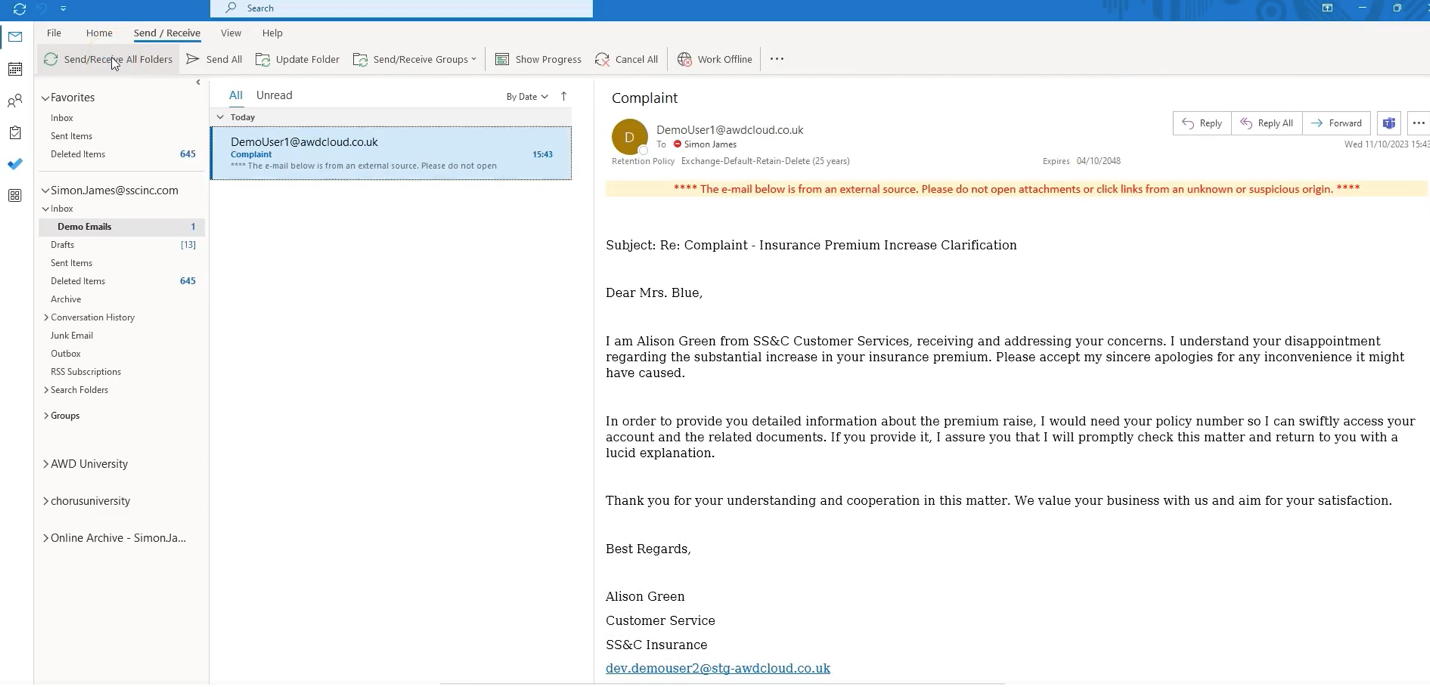
In the first step, generative AI will help personalize an initial response. Instead of using a generic email template or having your customer support agent type out a full response, gen AI uses its natural language processes (NLP) capabilities to understand the context of Rebecca’s original complaint.

Using that knowledge base, the gen AI-enabled digital worker is going to write out a response a lot quicker than a person could and flag any issues as it works. In this example, Rebecca didn’t provide her policy number, so the digital worker asked for more details. The policy number is needed so the insurer can understand the reason for Rebecca’s premium increase.
At this point, gen AI marks the complaint as complete since it cannot be fulfilled with the information given. It has extracted the information we do know and categorized the complaint type, which can now be used for reporting purposes.
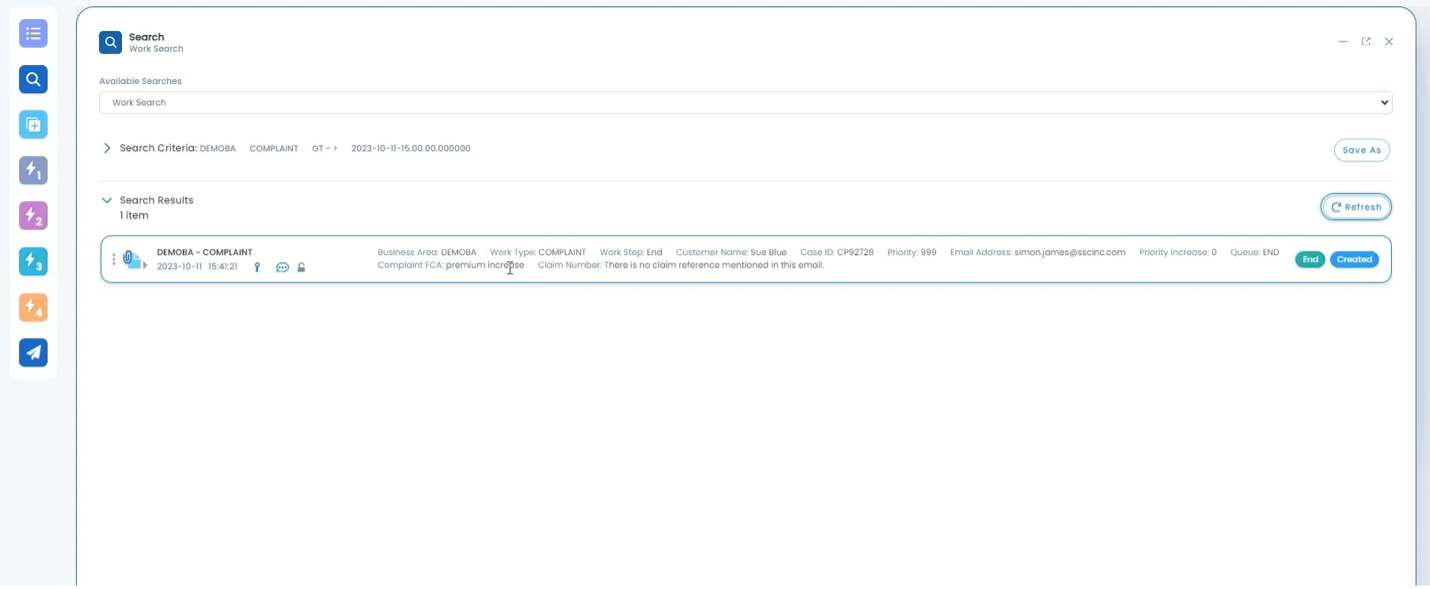
Watch demo video below to see how you can use generative AI in customer service
In this second example, Helen is unhappy with the customer service she has received. She lodges a complaint via email.
In this case, the digital worker locates the reference to poor customer service and the representative involved, and gen AI composes an email containing the relevant data. It types up a response, assuring Helen that her complaint will be examined and addressed.

In the original email, we have the policy number, a claim reference and the customer’s name – all of which gen AI extracts and passes on to the process management system. Gen AI identifies the complaint type as poor customer service and recommends that it be investigated further by the insurer, providing specific suggestions on what to do next.
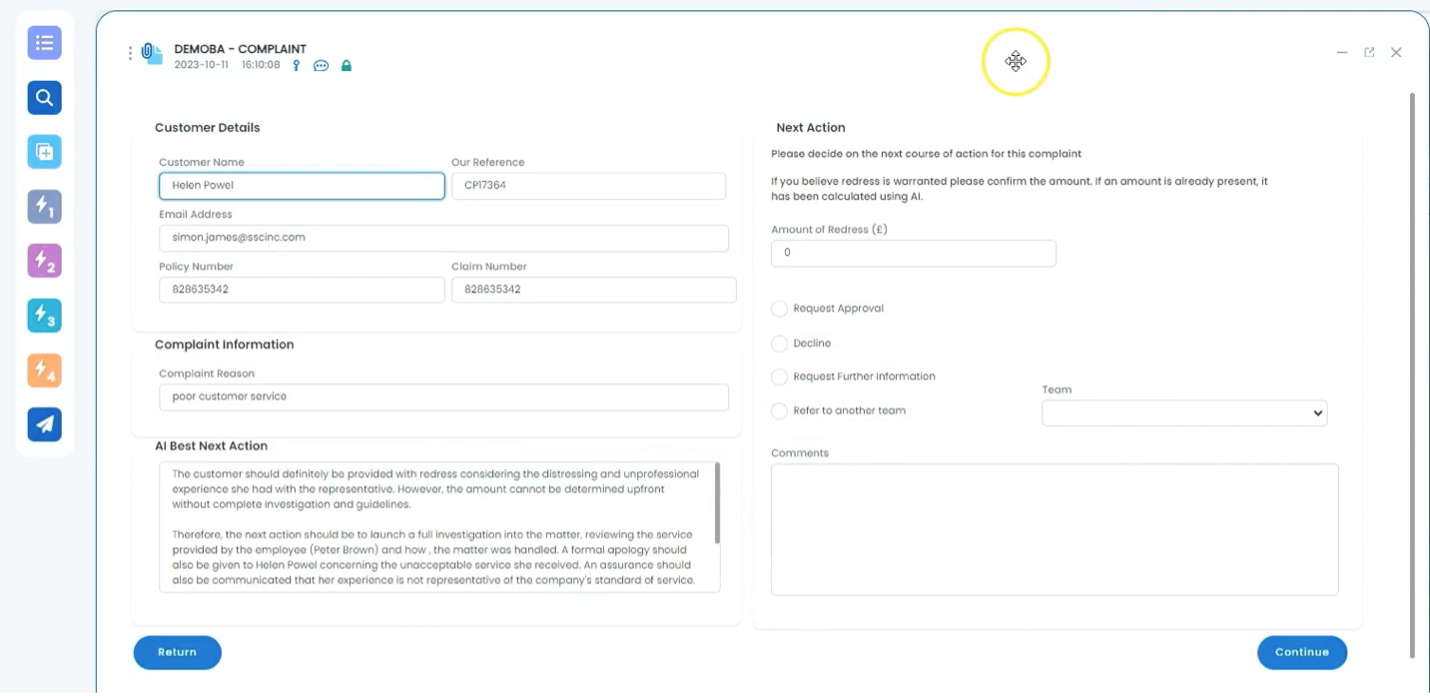
In this case, the insurer will provide redress to the customer. Chorus triggers the digital worker to complete the payment.
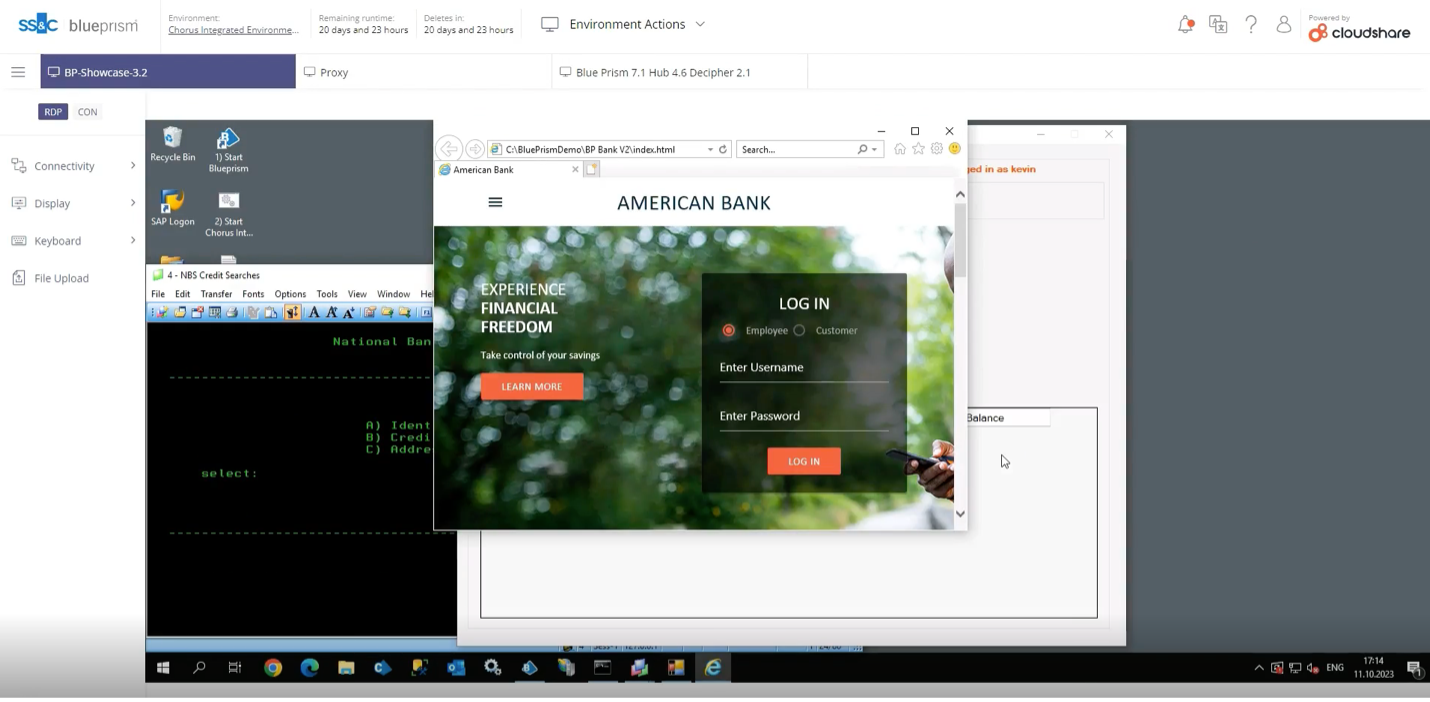
The digital worker retrieves the relevant customer and payment details from the account record to issue the payment. To complete the process, a standard email response notifies Helen of the redress.
With Chorus! Chorus’s low-code design framework orchestrates the interactions between the gen AI, human workers and digital workers.
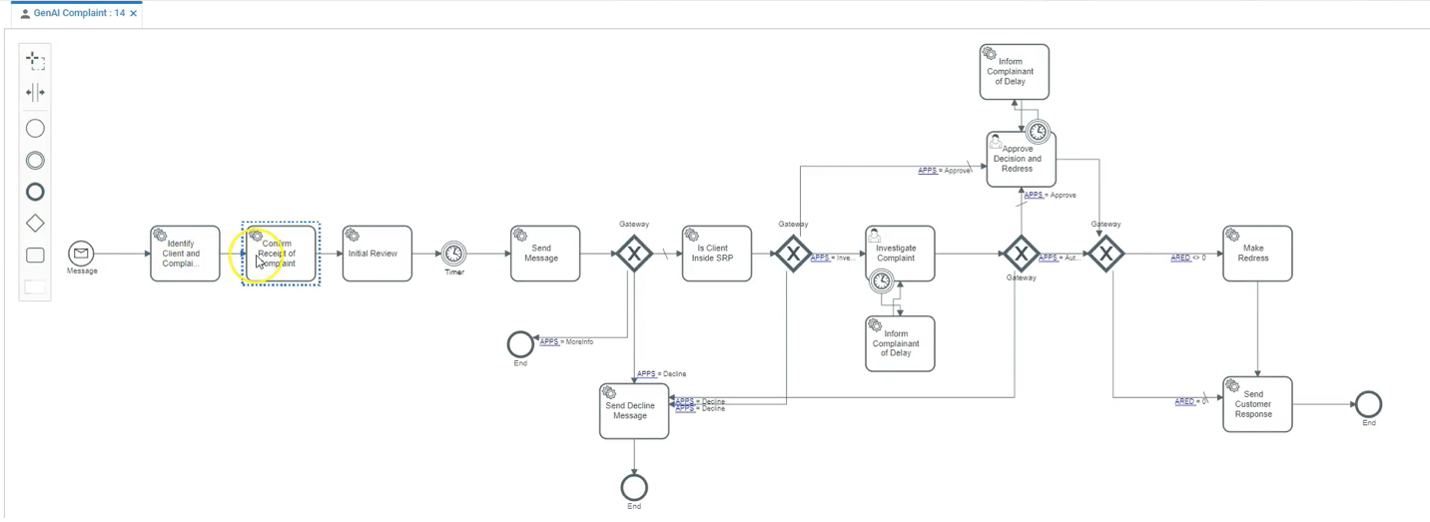
The gen AI service requires specific prompts to drive the request’s outcome. These are configured using the same low-code environment, making it easy for business users to make changes as a process or business evolves.
By using gen AI with IA technologies such as RPA and BPM, you can automate your end-to-end processes more efficiently with low-code development.
Find out how you can think bigger about generative AI and intelligent automation in your customer service processes.
Before you jump with both feet in, make sure you find out how to prepare for generative AI. Here are some challenges you’ll need to address with this technology:
In practice, generative AI can offer a host of benefits for customer service, especially when used together with intelligent automation.
Generative AI offers a new evolution into how customer complaints are received, handled, responded to and followed up on. It allows organizations to keep track of their customers’ experiences and ensure they continuously provide high-quality products or services, and check that their agents get to focus on higher-value work.
Personalize your experiences and improve the efficiency of your customer support processes. Find out how you can turn your ideas into reality by exploring generative AI automation. Contact us to learn more.
If your network blocks YouTube, you may not be able to view the video on this page. In this case, please use another device. Pressing play on the video will set third-party YouTube cookies. Please read our Cookies Policy for more information.